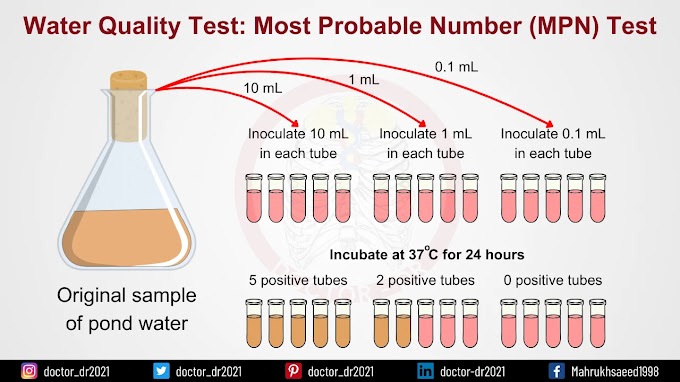Introduction:
Microbial biotechnology is an exciting and rapidly advancing field that explores the potential of microorganisms to improve our lives and our planet. These tiny organisms, including bacteria, fungi, and viruses, have been around for billions of years and are found in almost every environment on Earth. In recent years, researchers have increasingly recognized the potential of microbial biotechnology in a wide range of applications, from biofuels to bioremediation and beyond. In this blog post, we will explore the future of microbial biotechnology, including the latest developments, challenges, and opportunities in this field.
Biofuels:
One of the most promising applications of microbial biotechnology is the production of biofuels. Biofuels are renewable energy sources derived from living organisms, such as plants and microorganisms. Microorganisms, in particular, are ideal for biofuel production because they are capable of converting a wide range of feedstocks into fuel, including waste materials like agricultural residues and food waste.
Several types of biofuels can be produced using microbial biotechnology, including bioethanol, biodiesel, and biogas. Bioethanol is produced by fermenting sugars or starches using yeast or bacteria, while biodiesel is produced by converting oils and fats using microorganisms. Biogas is produced by the anaerobic digestion of organic matter using bacteria.
In recent years, there have been significant advances in microbial biotechnology for biofuel production. For example, researchers have developed new strains of microorganisms that are more efficient at converting feedstocks into fuel. They have also developed new fermentation processes that can produce biofuels more quickly and at lower cost. As a result, biofuels are becoming increasingly competitive with fossil fuels and are likely to play a significant role in meeting future energy needs.
Bioremediation:
Another important application of microbial biotechnology is bioremediation. Bioremediation is the use of microorganisms to remove or degrade pollutants from the environment. Microorganisms are particularly useful for bioremediation because they can break down complex pollutants into simpler, less harmful substances.
There are many examples of successful bioremediation projects using microbial biotechnology. For example, in the 1980s, microorganisms were used to clean up the Exxon Valdez oil spill in Alaska. More recently, researchers have used microorganisms to remove heavy metals from contaminated soil and to degrade plastics in the ocean.
Despite the successes of bioremediation, there are still many challenges that need to be overcome. For example, some pollutants are very resistant to degradation and require specialized microorganisms or treatment methods. In addition, bioremediation can be slow and expensive, especially for large-scale projects. However, with continued research and development, microbial biotechnology is likely to become an increasingly important tool for environmental cleanup.
Biopharmaceuticals:
Microbial biotechnology is also becoming an important tool for the production of biopharmaceuticals. Biopharmaceuticals are drugs that are produced using living organisms, such as bacteria or yeast. These drugs are becoming increasingly important for the treatment of a wide range of diseases, including cancer, autoimmune diseases, and infectious diseases.
One of the key advantages of microbial biotechnology for biopharmaceutical production is that microorganisms can be engineered to produce specific proteins or other molecules. This means that researchers can create custom-designed drugs that are tailored to specific diseases or patient populations.
In recent years, there have been significant advances in microbial biotechnology for biopharmaceutical production. For example, researchers have developed new strains of bacteria and yeast that are more efficient at producing complex proteins. They have also developed new purification techniques that can isolate biopharmaceuticals more quickly and at lower cost. As a result, biopharmaceuticals are becoming more widely available and are likely to play an increasingly important role in healthcare.
Challenges and Opportunities:
Despite the many advances in microbial biotechnology, there are still many challenges that need to be addressed. For example, the development of new strains of microorganisms can be time-consuming and expensive, and there are still many gaps in our understanding of how microorganisms function. In addition, the regulatory environment for microbial biotechnology can be complex, and there are concerns about the potential risks associated with the release of genetically modified microorganisms into the environment.
However, there are also many opportunities for the future of microbial biotechnology. For example, researchers are exploring the use of synthetic biology to engineer new microorganisms with novel functions. They are also exploring the potential of microbial biotechnology for the production of high-value chemicals and materials, such as bioplastics and bio-based textiles. In addition, there is growing interest in the use of microbial biotechnology for sustainable agriculture, including the development of microbial fertilizers and the use of microorganisms to enhance plant growth and health.
Conclusion:
Microbial biotechnology is a rapidly advancing field with many exciting applications, from biofuels to bioremediation and biopharmaceuticals. Although there are still many challenges to be overcome, there are also many opportunities for the future of microbial biotechnology. As researchers continue to explore the potential of microorganisms, it is likely that we will see many new developments and applications in the years to come. Whether it is through the development of new strains of microorganisms, the use of synthetic biology, or the exploration of new applications, microbial biotechnology is sure to play an increasingly important role in our lives and in the future of our planet.

.webp)




.webp)
.webp)
